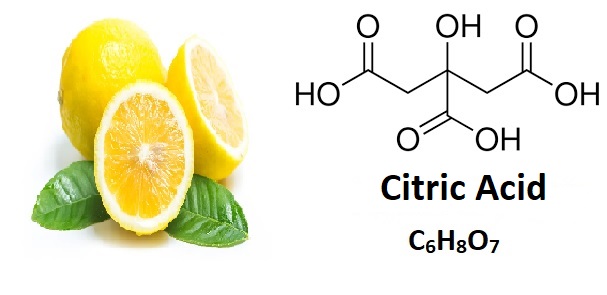CITRIC ACID IMPROVES TILAPIA FEED QUALITY, PHOSPHORUS, CALCIUM AVAILABILITY AND GASTROINTESTINAL HEALTH
Citric acid is an organic acid, which has been used as a feed additive because it has a reasonable cost, pleasant taste, and fast assimilation, showing positive effects on the growth and health of some livestock and aquatic species. This study aimed to evaluate the effects of increased levels of citric acid (0, 10, 20, 30, and 40 g/kg) in an isonitrogenous and isoenergetic diet on growth performance, body composition, apparent digestibility of nutrients and minerals, hematology, pH in stomach and intestine, and intestinal histomorphometry of Nile tilapia juveniles. The supplementation of 20 g/kg citric acid improved the availability of phosphorus and calcium and positively influenced the intestinal morphology of Nile tilapia juveniles.
Introduction
The use of complete and balanced diets formulated to provide minimal environmental impact is crucial to meet the increasing demand for sustainable aquaculture production. In this context, feed additives have been used in aquafeeds to improve the health and performance of aquatic species, reducing the reliance on antibiotics and mitigating concerns related to antibiotic resistance and environmental consequences (Hossain et al., 2023).
Phosphorus (P) and calcium (Ca) are essential macrominerals for fish. P is a key component of skeletal tissues, nucleic acids, ATP, and phospholipids, while Ca plays vital roles in skeletal development, coagulation, osmoregulation, muscular contraction, and nerve transmissions (Peacock, 2021, Khajepour and Hosseini, 2012). Fish retain around 40 % of dietary P, with the remainder being released into the environment, contributing to aquatic ecosystem pollution (Sugiura, 2018). The excess of P, as well as nitrogen and organic matter, cause eutrophication of water, which results in increased phytoplankton growth, a decrease in dissolved oxygen, and a reduction in species diversity (Boyd, 2020). Therefore, there is a need for studies focusing on feed additives that enhance the availability of P and Ca in fish diets, contributing to the development of eco-friendly aquafeed formulations.
Organic acids can improve the nutrient digestibility and availability of dietary minerals by reducing gastric pH, increasing some digestive enzyme activity, modulating bacterial growth in the intestine, and stimulating the proliferation of epithelial cells in the gastrointestinal mucosa (Castillo et al., 2014, Lim et al., 2015, Ng and Koh, 2016). Additionally, organic acids have high gross energy values and are involved in metabolic processes such as ATP generation in the citric acid cycle or the carboxylic acid cycle (Freitag, 2007). Among the organic acids, citric acid (2-hydroxy-1,2,3-propane-tricarboxylic acid) and its salts are cost-effective, have high buffering capacity, low toxicity, and are easily assimilated by terrestrial or aquatic animals (Ng and Koh, 2016). Citric acid, as a feed additive, has been shown to improve growth performance, feed efficiency, and the availability or retention of P and Ca in some fish species (Baruah et al., 2007; Khajepour and Hosseini, 2012; Castillo et al., 2014; Zhu et al., 2015; Zhang et al., 2016; Hisano et al., 2017). However, there is limited information on the use of dietary citric acid for Nile tilapia. The few available research with tilapia reported improved growth, and overall health status (Al-Zayat, 2019, Mahmoud et al., 2019). To the best of our knowledge, no studies have examined the effects of dietary citric acid supplementation on mineral availability and intestinal histomorphometry in Nile tilapia.
Therefore, the aim of this study was to assess the impact of dietary citric acid supplementation on growth performance, body composition, stomach and intestine pH, apparent digestibility of nutrients and macrominerals, hematology, and intestinal histomorphometry in Nile tilapia juveniles.
Experimental design, diets and conditions
The experimental design followed a fully randomized design with five treatments and five replicates per treatment. Treatments were defined by formulating five iso-nitrogenous (280.00 g/kg digestible protein) and isocaloric (12.98 MJ digestible energy kg-1) diets, supplemented with different levels of anhydrous citric acid (Synth, Diadema, SP, Brazil): 0, 10, 20, 30 and 40 g/kg.
Results and discussion
The research carried out in this study showed promising results in the use of citric acid as a feed additive in tilapia diets. The study demonstrated that citric acid supplementation improved phosphorus availability by over 42% and calcium by over 47%. In addition, the intestinal morphology of tilapia was positively affected by supplementation, suggesting improved gastrointestinal health.
Citric acid is an organic acid with a reasonable cost and pleasant taste. It has been used as a feed additive for several animal species of zootechnical interest. However, little information is available on its use in aquatic organisms. Consequently, the study focused on assessing its effects on the growth and health of Nile tilapia (Oreochromis niloticus), the world’s most widely produced fish species.
Although citric acid supplementation has no significant impact on tilapia growth or body composition, better utilization of several macrominerals, notably phosphorus, is essential for the development of environmentally-friendly diets, as it limits the release of phosphorus into aquatic ecosystems, one of the main pollutants in these environments.
Other benefits of citric acid supplementation include improved immune status in fish, a fact that can help reduce the use of antimicrobial agents in production and thus enhance the product’s image on the consumer market, while the use of these substances in animal feed is a source of concern worldwide due to the risks to human health.
Conclusion
Fish fed diets containing 20 g/kg citric acid positively influenced intestinal morphology, which showed higher values for villi height and crypt width/depth and villi/crypt ratio compared with the control group. In addition, supplementation with 20 g/kg citric acid improved phosphorus and calcium availability in juvenile Nile tilapia.
Source : Hisano H, Cardoso I L, Soares M P, et al. Dietary citric acid improves phosphorus and calcium availability and intestinal morphology of Nile tilapia (Oreochromis niloticus).
Animal Feed Science and Technology, 2023, 305:115785. https://doi.org/10.1016/j.anifeedsci.2023.115785

